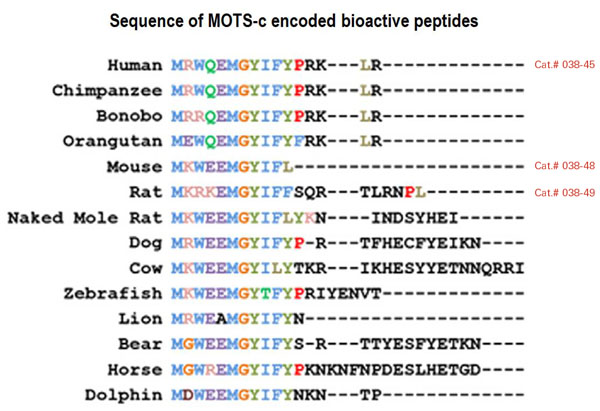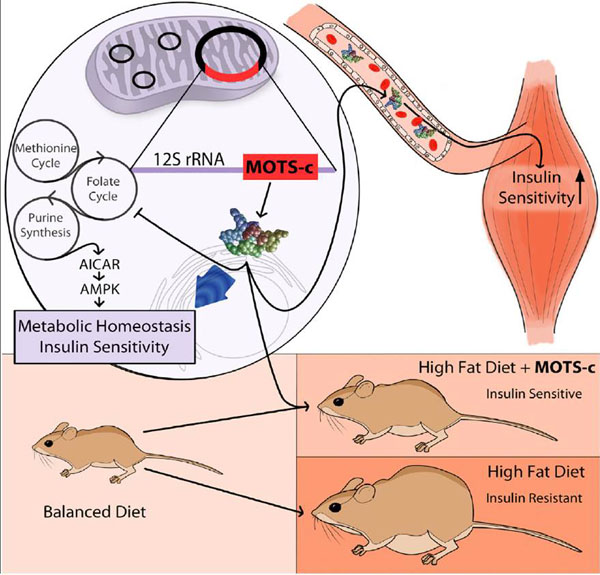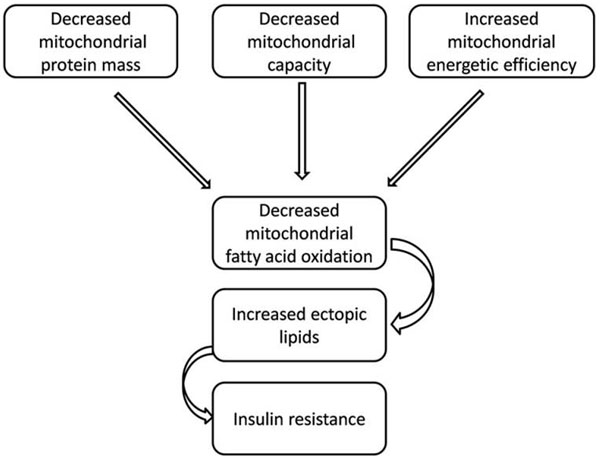
Mitochondria are known to be functional organelles, but their role as a signaling unit is increasingly being appreciated. The identification of a short open reading frame (sORF) in the mitochondrial DNA (mtDNA) that encodes a signaling peptide, humanin, suggests the possible existence of additional sORFs in the mtDNA. Here we report a sORF within the mitochondrial 12S rRNA encoding a 16-amino-acid peptide named MOTS-c (mitochondrial open reading frame of the 12S rRNA-c) that regulates insulin sensitivity and metabolic homeostasis. Its primary target organ appears to be the skeletal muscle, and its cellular actions inhibit the folate cycle and its tethered de novo purine biosynthesis, leading to AMPK activation. MOTS-c treatment in mice prevented age-dependent and high-fat-diet-induced insulin resistance, as well as diet-induced obesity. These results suggest that mitochondria may actively regulate metabolic homeostasis at the cellular and organismal level via peptides encoded within their genome.
Lee C, Zeng J, Drew BG, et al. The mitochondrial-derived peptide MOTS-c promotes metabolic homeostasis and reduces obesity and insulin resistance. Cell Metab. 2015;21(3):443-54.
Insulin resistance, "a relative impairment in the ability of insulin to exert its effects on glucose, protein and lipid metabolism in target tissues," has many detrimental effects on metabolism and is strongly correlated to deposition of lipids in non-adipose tissues. Mitochondria are the main cellular sites devoted to ATP production and fatty acid oxidation. Therefore, a role for mitochondrial dysfunction in the onset of skeletal muscle insulin resistance has been proposed and many studies have dealt with possible alteration in mitochondrial function in obesity and diabetes, both in humans and animal models. Data reporting evidence of mitochondrial dysfunction in type two diabetes mellitus are numerous, even though the issue that this reduced mitochondrial function is causal in the development of the disease is not yet solved, also because a variety of parameters have been used in the studies carried out on this subject. By assessing the alterations in mitochondrial efficiency as well as the impact of this parameter on metabolic homeostasis of skeletal muscle cells, we have obtained results that allow us to suggest that an increase in mitochondrial efficiency precedes and therefore can contribute to the development of high-fat-induced insulin resistance in skeletal muscle.
Crescenzo R, Bianco F, Mazzoli A, Giacco A, Liverini G, Iossa S. Mitochondrial efficiency and insulin resistance. Front Physiol. 2014;5:512.


| Catalog# | Product | Standard Size | Price |
|---|---|---|---|
| 038-45 | MOTS-c (Human) | 100 µg | $189 |
| 038-48 | MOTS-c (Mouse) | 100 µg | $152 |
| 038-46 | MOTS-c (1-12) (Human) | 100 µg | $152 |
| 038-47 | MOTS-c (1-13) (Human) | 100 µg | $167 |
| 038-50 | MOTS-c (1-14) (Rat) | 100 µg | $167 |
| 038-49 | MOTS-c (Rat) | 100 µg | $189 |
Social Network Confirmation